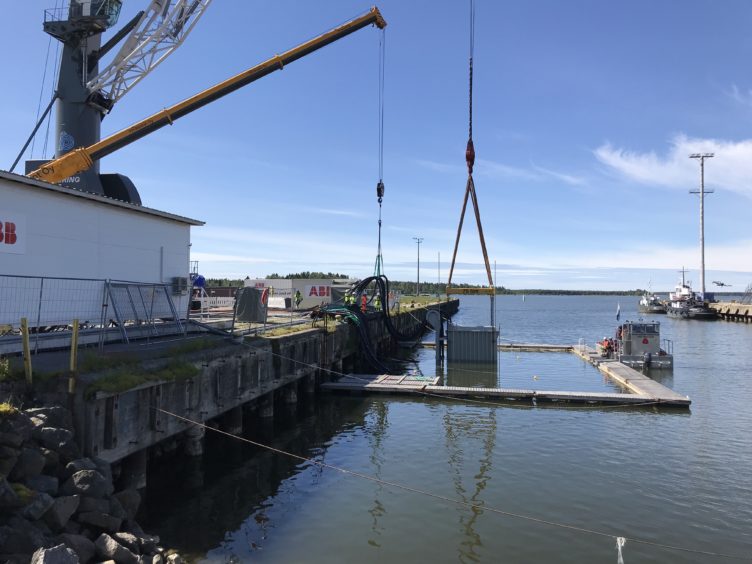
A new system which can supply electricity over distances of up to 600 kilometres and down to waters depths with pressures that could shatter a brick has passed a trial with flying colours.
Swiss firm ABB’s pioneering subsea power distribution and conversion system was put through its paces with a 3,000-hour shallow water test at a sheltered harbour in Vaasa, Finland.
It was the culmination of a $100 million project between ABB and Equinor, with its partners Total and Chevron, which was initiated in 2013.
ABB said the majority of the world’s offshore hydrocarbon resources are now in reach of electrification thanks to the system, which can clean up offshore oil and gas production.
The feat is achievable with a single cable requiring little or no maintenance for up to 30 years.
By powering pumps and compressors on the seabed, closer to the reservoir, the technology can significantly reduce power consumption.
There is potential for substantial energy savings, with reduced carbon emissions using power from shore.
The technology can connect to any power source, enabling future integration with renewable energy, such as wind and hydro power.
It could offer capex savings of more than $500 million, if eight consumers are linked through a single cable over a distance of 200 km from other infrastructure.
Peter Terwiesch, President of ABB’s Industrial Automation business, said: “This milestone marks an outstanding achievement and is the culmination point of an inspirational technology development achieved through tremendous dedication, expertise and perseverance.
“It is the result of intensive collaboration by over 200 scientists and engineers from ABB, Equinor, Total and Chevron in a multi-year, joint effort.”
Terwiesch added: “Moving the entire oil and gas production facility to the seabed is no longer a dream. Remotely operated, increasingly autonomous, subsea facilities powered by lower carbon energy are more likely to become a reality as we transition towards a new energy future.”
